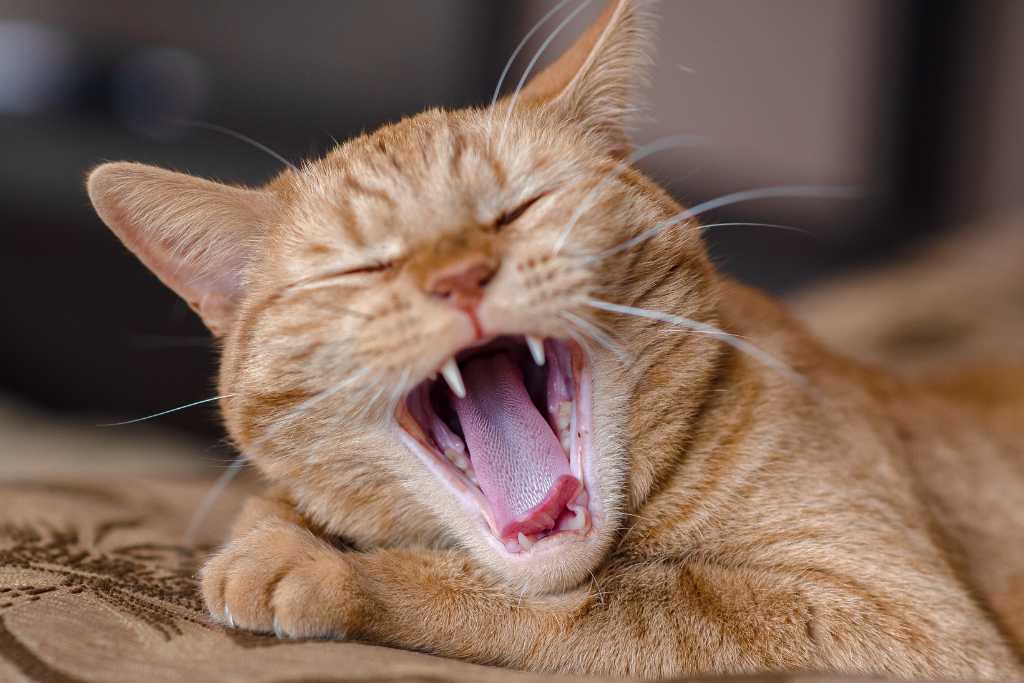$59.00
AWAY FROM FREE SHIPPINGNICE. SHIPPING IS ON US!
$120.00
AWAY FROM FREE GIFTCHOOSE A FREE GIFT DURING CHECKOUT!
YOUR CART IS EMPTY. SHOP NOW.
Brushing your cat’s teeth regularly is an essential component of maintaining a healthy lifestyle for her. Just like us, cats can suffer from tartar and plaque build-up, and develop gum disease. With cats, they don’t show us they are in pain until it’s severe. Toothache can be hard to spot because a cat will continue eating until the dental problems are advanced and painful. Being proactive about your cat's dental health can help to prevent her from developing painful gum disease.

If your cat has bad breath, this is a strong indicator that they have dental problems. Kitten bad breath is most often caused by plaque build-up, the sticky stuff on the cat’s teeth that’s loaded with bacteria. The bacteria release Volatile Sulphur Compounds (VSCs), odorous molecules that give off that strong, stinky smell. Your cat’s breath will only get worse if you let the problem go unchecked.
A mild fishy scent is often fine but if the Halitosis is bad, coupled with drooling and bleeding gums, the cause is often related to gum disease and/or tooth decay. She will likely need to see the vet for deep cleaning or even a tooth extraction.
Daily brushing is the absolute best way to prevent dental disease and it’s highly recommended to start them young. Adult cats are often more resistant to teeth cleaning, but it is still possible to get them accustomed to it. Begin by gently touching your cat’s mouth. If your cat is quiet and allows you to manipulate her mouth, immediately reward her good behaviour with a treat. If your cat is resistant and give her the treat, and stop touching her mouth for now. You can try again later. Do this frequently to get her used to having her mouth touched. Remember, patience is a virtue, and don’t force your kitty to do anything that she doesn’t want to. Keep the experience positive. Once your cat understands the process, slowly transition to a bristled finger brush or cat toothbrush.
When brushing your cat’s teeth, use toothpaste specially designed for cats. They often come in a variety of flavours that most cats will enjoy. Do not try to brush your cat's teeth with our human toothpaste. Our toothpaste contains fluoride and when ingested, it can make your cat severely ill.

For some cat owners, brushing their cats’ teeth is easier said than done! The good news is, there are always no-brushing solutions. While these no-brushing alternatives cannot totally replace the benefits of brushing, they can help to lessen the frequency of brushing significantly. These solutions slow down plaque build-up and fight bacteria that cause bad breath. Pet parents struggling with daily brushing can use a no-brushing solution in between brushing.
Let’s start with a no-brushing gel like this Tropiclean Fresh Breath - No Brushing Clean Teeth Gel for Cats. On days when you are not able to brush kitty teeth, apply 2 drops of gel to each side of her mouth. She will begin licking her lips, allowing the gel to coat all surfaces of her teeth and gums. The gel will begin to work, cleaning up the tartar and fighting against bacteria that cause bad breath. No brushing is required! For maximum effect, withhold food and water for 30 minutes before and after application.
For picky kitties who dislike a minty flavour, there’s the honey marinated chicken flavour oral care gel too. This savoury gel will certainly make your cat’s oral care routine more manageable. Another easy and fuss-free no-brushing solution is the water additives. Water additives help to slow down plaque build-up. Just add 1 capful of the TropiClean Fresh Breath Water Additive For Cats to your cat’s water bowl every time you refill it to improve your kitty’s breath.

As predators, part of the cat’s diet consists of raw, meaty bones. Chewing on bones helps to remove tartar and plaque, keeping their teeth and gums healthy. Unlike their outdoor counterpart, our domesticated indoor kitties ate mostly commercial cat food. As such, some veterinarians recommend giving them chew toys.
Things to look for when shopping for cat chew toys:

Not all dental chews for cats are equal. Make sure that any products you choose to use are approved by the Veterinary Oral Health Council (VOHC). Approved products have met a standard of effectiveness and have gone through clinical trials. Check the VOHC website for the list of approved oral care products for cats. Greenies is a VOHC-approved product for cats’ oral health. Please take note that dental treats alone are often not sufficient for effectively cleaning your cat’s teeth. They must be used alongside a daily toothbrushing routine.

Many cats do not show obvious signs of discomfort until they’re in considerable pain. By then, most cats would have suffered major gum disease. Tooth decay and gum disease have been linked to heart disease, kidney disease, and other serious chronic illnesses in cats. As such, taking proactive actions like daily oral cleaning and regular vet check-ups can help to prevent all these from happening. Don’t wait until your cat shows signs of distress to have their teeth checked out. Make oral care part of your kitty’s regular grooming routine.

Comments will be approved before showing up.



